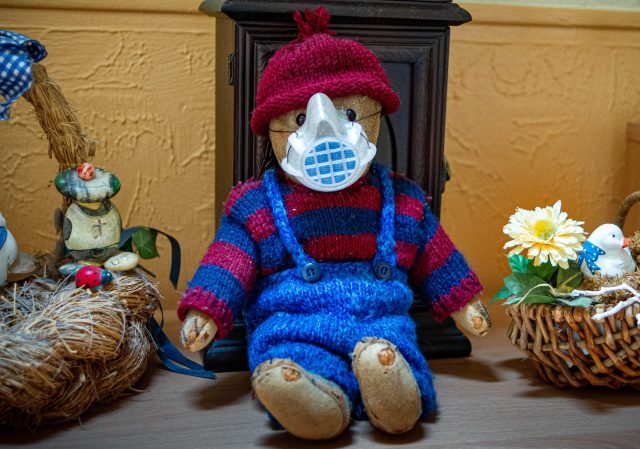As the leaves begin to change and a crisp chill fills the air, the arrival of flu season becomes an inevitable part of our yearly routine. For parents, this time of year often brings a unique set of challenges as they strive to keep their children healthy and thriving amidst the seasonal sniffles and coughs. Understanding the concerns and worries that come with protecting our little ones, this article aims to provide practical and effective tips to help you navigate flu season with confidence and care. With a focus on nurturing your child’s well-being, we hope to empower you with the knowledge and strategies needed to minimize the impact of flu season on your family, ensuring your children remain as healthy and happy as possible.
Boost Immunity with Nutritious Foods and Regular Exercise
During flu season, ensuring your children have a strong immune system is key to keeping them healthy. A combination of nutritious foods and regular exercise can make a big difference. Encourage your kids to enjoy a variety of colorful fruits and vegetables, which are packed with essential vitamins and minerals. Foods rich in Vitamin C, like oranges and strawberries, and zinc-rich foods such as beans and nuts, can help bolster their defenses.
- Fruits & Vegetables: Berries, citrus fruits, leafy greens
- Proteins: Lean meats, beans, nuts
- Whole Grains: Oatmeal, whole-wheat bread, brown rice
- Dairy: Yogurt, milk, cheese
Regular physical activity not only keeps kids fit but also enhances their immune response. Aim for at least 60 minutes of activity each day, which can be broken into smaller chunks. Fun activities like biking, dancing, or playing tag can make exercise enjoyable and effective. Encourage your children to explore different sports or physical hobbies that they find exciting.
| Activity | Duration | Benefit |
|---|---|---|
| Jump Rope | 15 mins | Improves cardiovascular health |
| Soccer | 30 mins | Boosts teamwork and coordination |
| Yoga | 20 mins | Enhances flexibility and relaxation |

Create a Germ-Free Environment with Effective Cleaning Practices
- Regularly disinfect high-touch surfaces: It’s crucial to clean areas that kids frequently come into contact with, such as door handles, light switches, and tabletops. Use a disinfectant that is proven to kill viruses and bacteria, and make it a habit to clean these surfaces daily.
- Encourage proper handwashing: Teach your children the importance of washing their hands thoroughly with soap and water, especially after playing, using the restroom, or before eating. Consider placing fun, kid-friendly handwashing posters near sinks to remind them of the steps.
- Use child-safe cleaning products: Opt for non-toxic, eco-friendly cleaning supplies that are safe for kids. This ensures that while you’re keeping germs at bay, you’re also not exposing them to harmful chemicals.
| Task | Frequency |
|---|---|
| Sanitize Toys | Weekly |
| Wash Bedding | Every Two Weeks |
| Clean Backpacks | Monthly |
Ventilate rooms regularly: Open windows to allow fresh air to circulate, which helps reduce indoor air pollutants and the concentration of airborne germs. This simple practice can make a significant difference in maintaining a healthier home environment.

Recognize Flu Symptoms Early and Seek Prompt Medical Advice
During flu season, being able to identify symptoms early can make a significant difference in the health and recovery of your children. Flu symptoms can appear suddenly and may include:
- Fever or feeling feverish/chills
- Cough and sore throat
- Runny or stuffy nose
- Muscle or body aches
- Headaches
- Fatigue or tiredness
- Vomiting and diarrhea (more common in children than adults)
It’s crucial to differentiate these symptoms from a common cold, as flu symptoms tend to be more severe. If you notice any of these signs, especially if they escalate quickly, seek medical advice promptly. Early intervention can help manage the flu more effectively, preventing complications and promoting quicker recovery.
| Symptom | Cold | Flu |
|---|---|---|
| Fever | Rare | Usual, high (100-102°F) |
| Headache | Rare | Common |
| Fatigue | Sometimes | Usual, can be severe |

Encourage Open Communication About Health and Feelings
- Create a Safe Space: Make sure your children feel comfortable discussing their health and emotions. Encourage them to express themselves openly by actively listening and showing empathy. Acknowledge their feelings without judgment, which can foster trust and openness.
- Ask Open-Ended Questions: Instead of questions that can be answered with a simple “yes” or “no,” try asking, “How are you feeling today?” or “What can I do to help you feel better?” This invites more detailed responses and helps you understand their concerns better.
- Share Age-Appropriate Information: Explain to your children why it’s important to talk about how they feel, especially during flu season. Use simple language that they can understand, and relate it to something familiar in their daily lives.
Consider establishing a routine where you check in with each other regularly. A dedicated time, perhaps during dinner or before bedtime, can ensure consistent communication. This practice not only keeps you informed about their well-being but also reinforces the importance of open dialogue about health and emotions.
| Age Group | Communication Tips |
|---|---|
| 3-5 years | Use simple stories or role-play to help them express feelings. |
| 6-9 years | Encourage drawing or writing about their emotions. |
| 10-12 years | Discuss the importance of mental and physical health openly. |








































